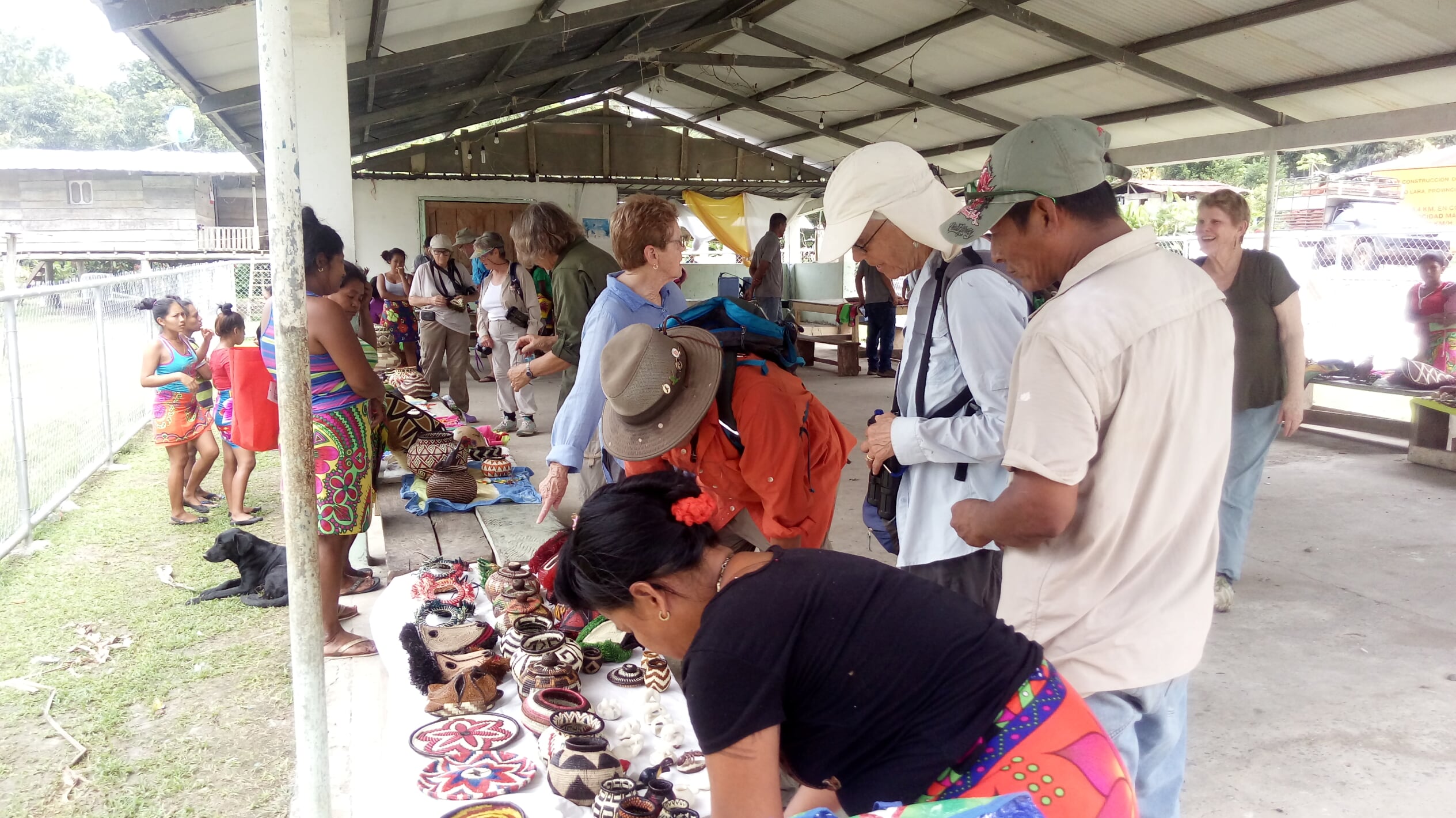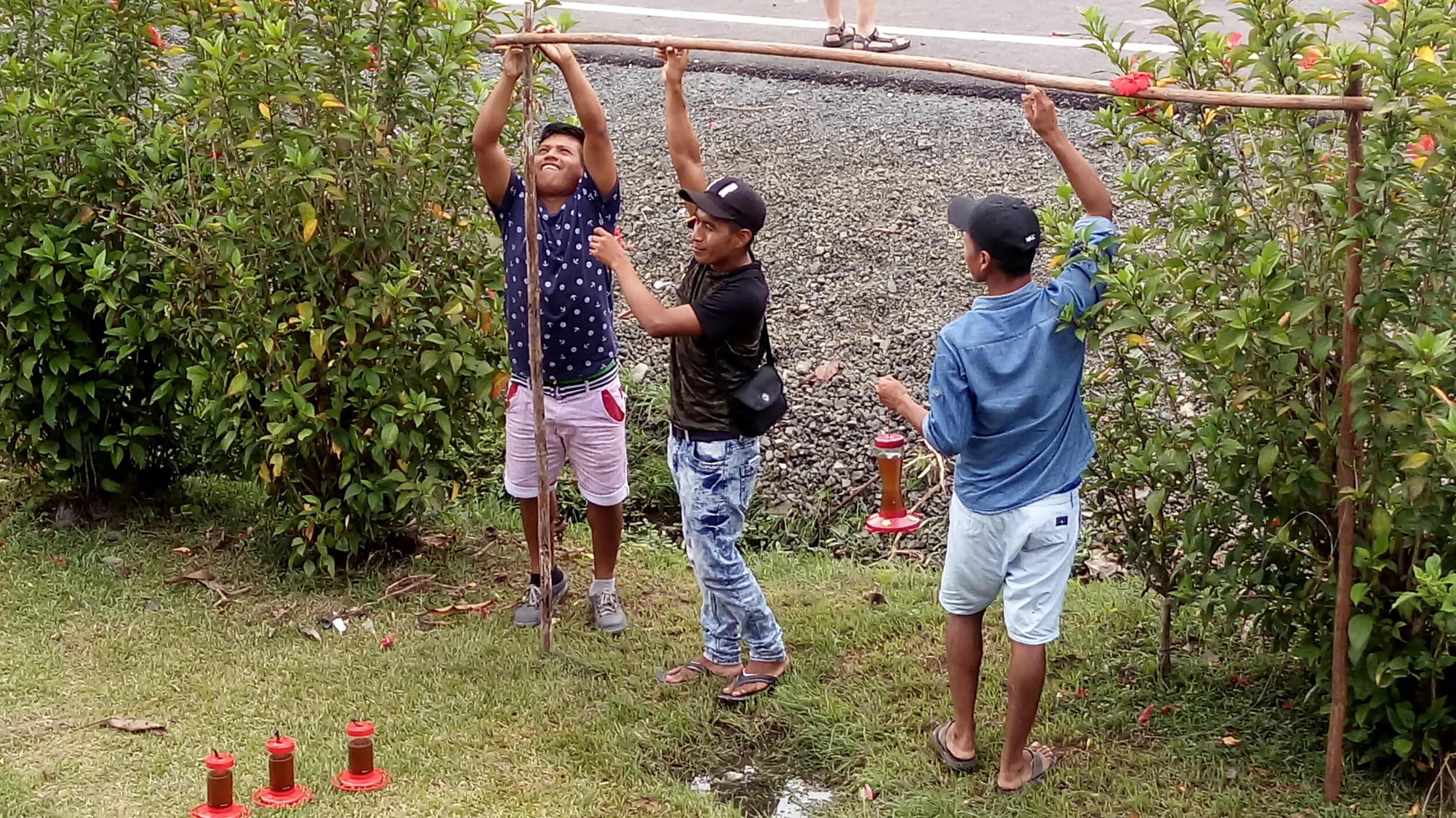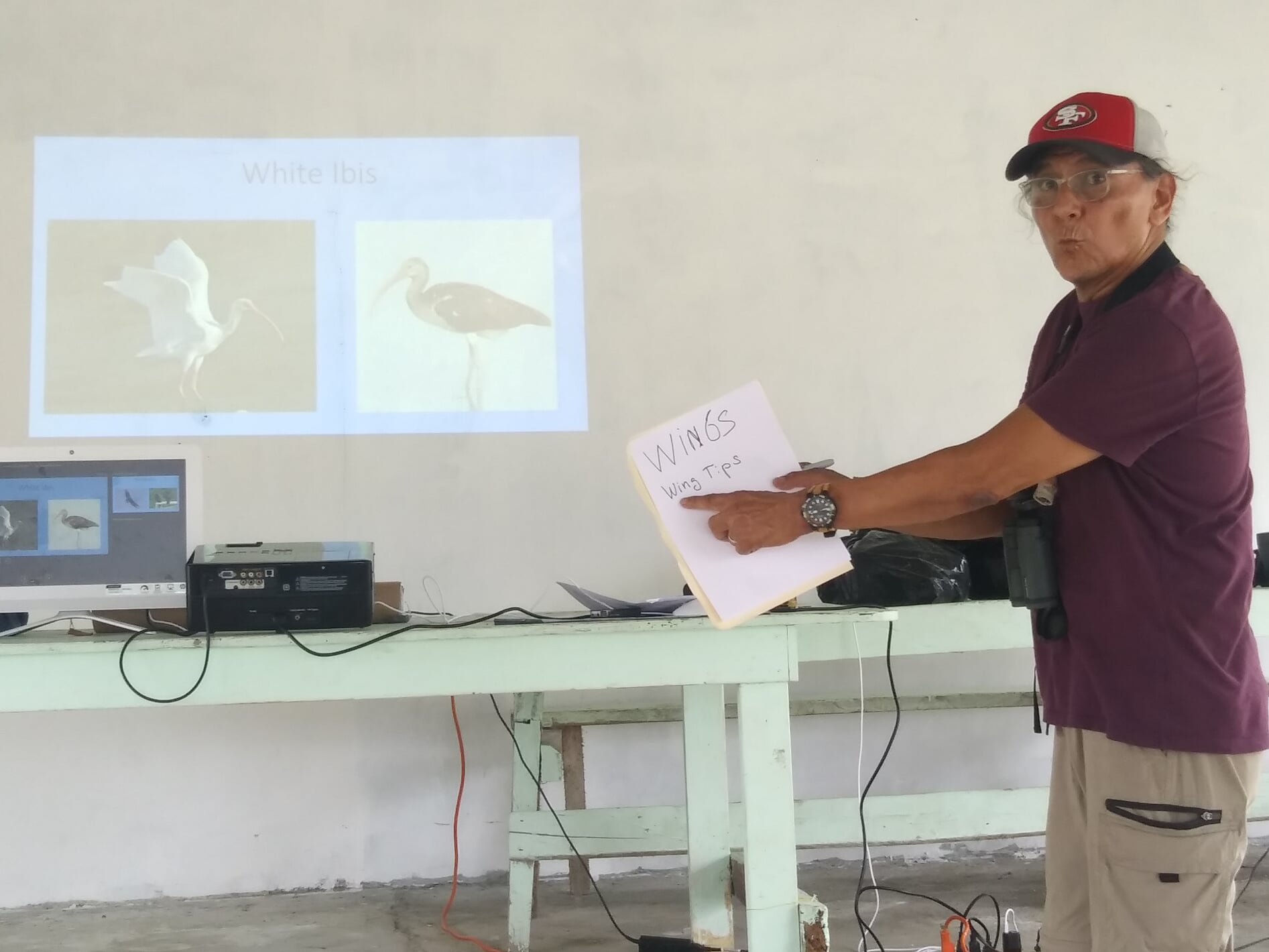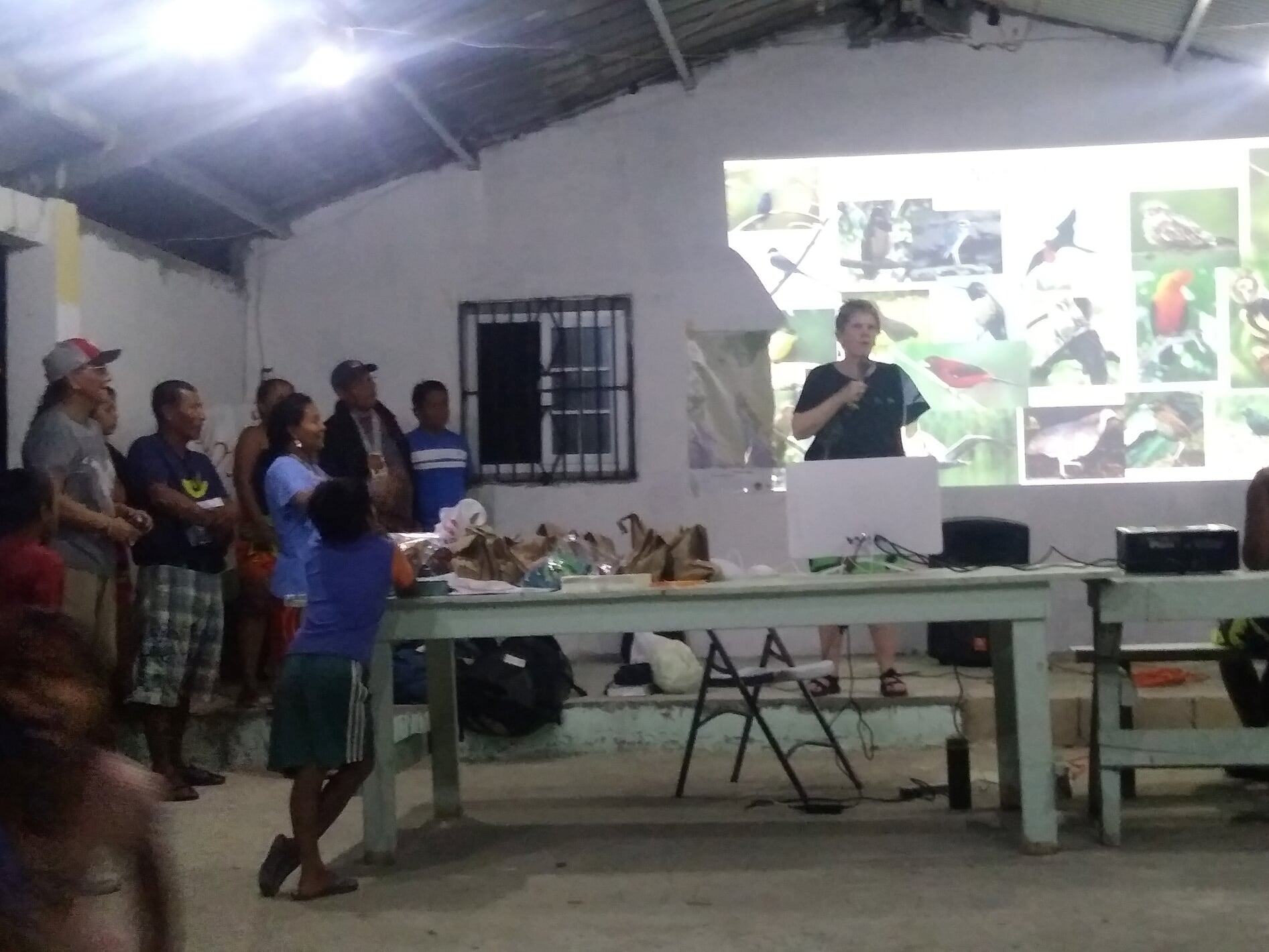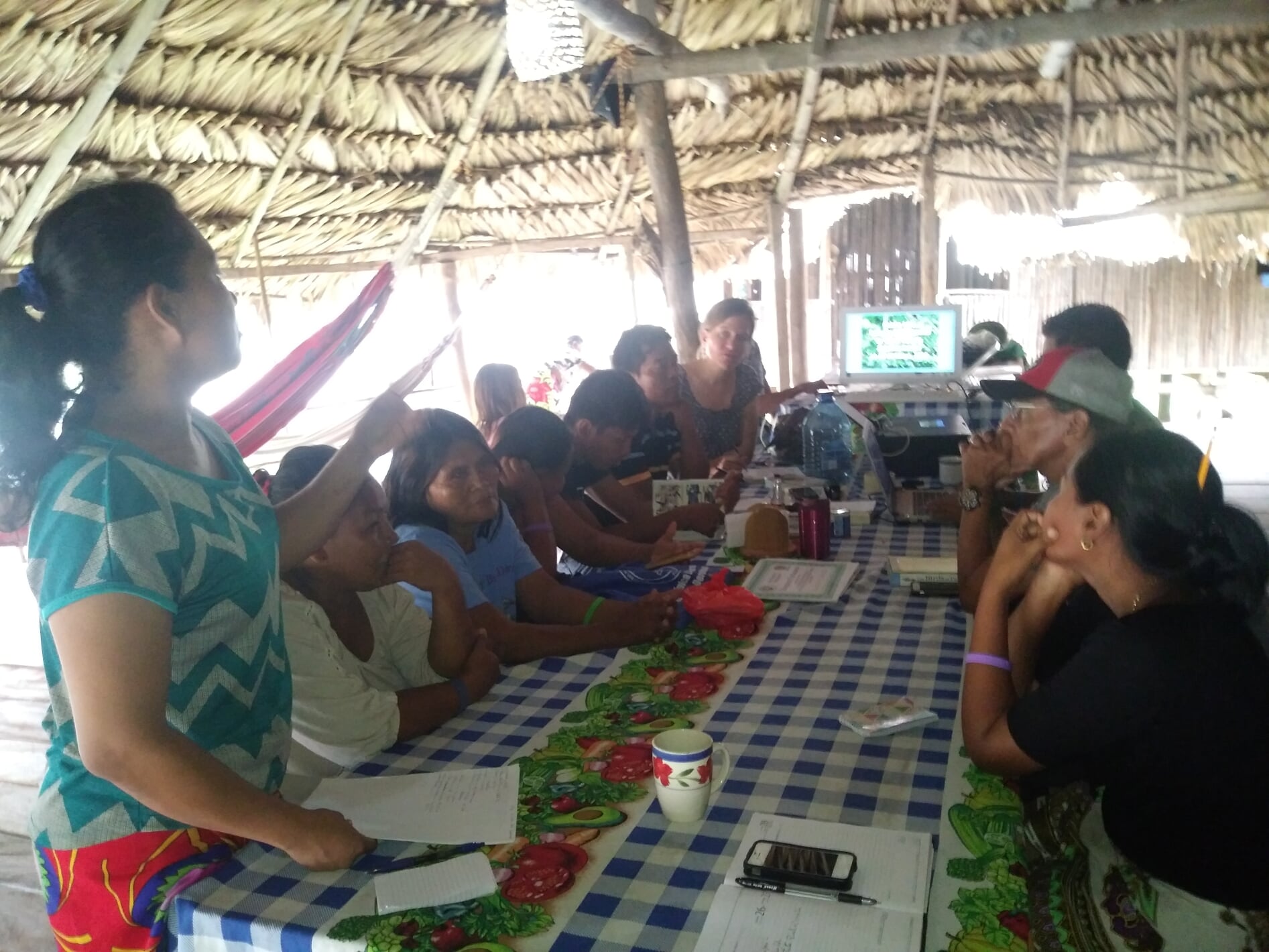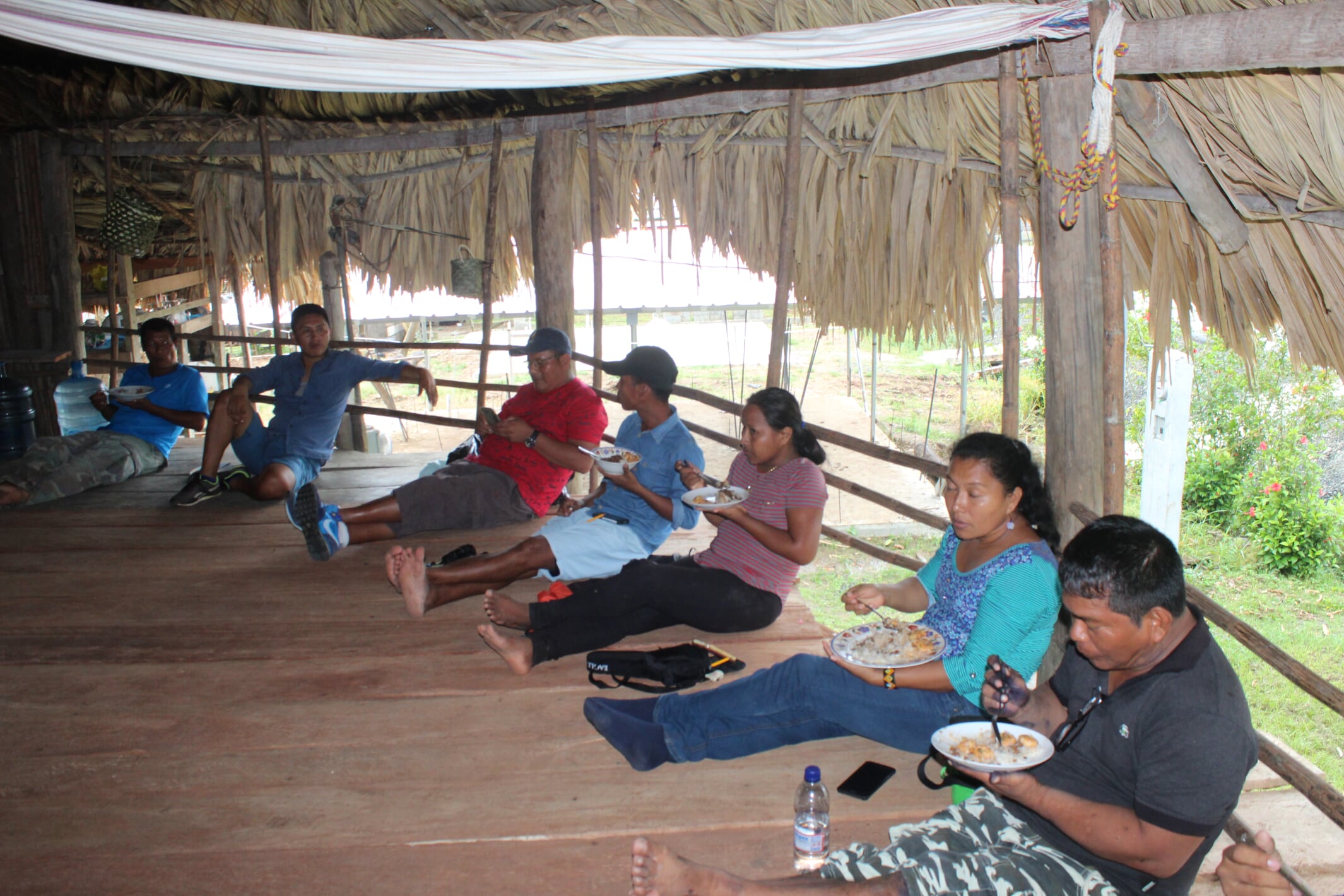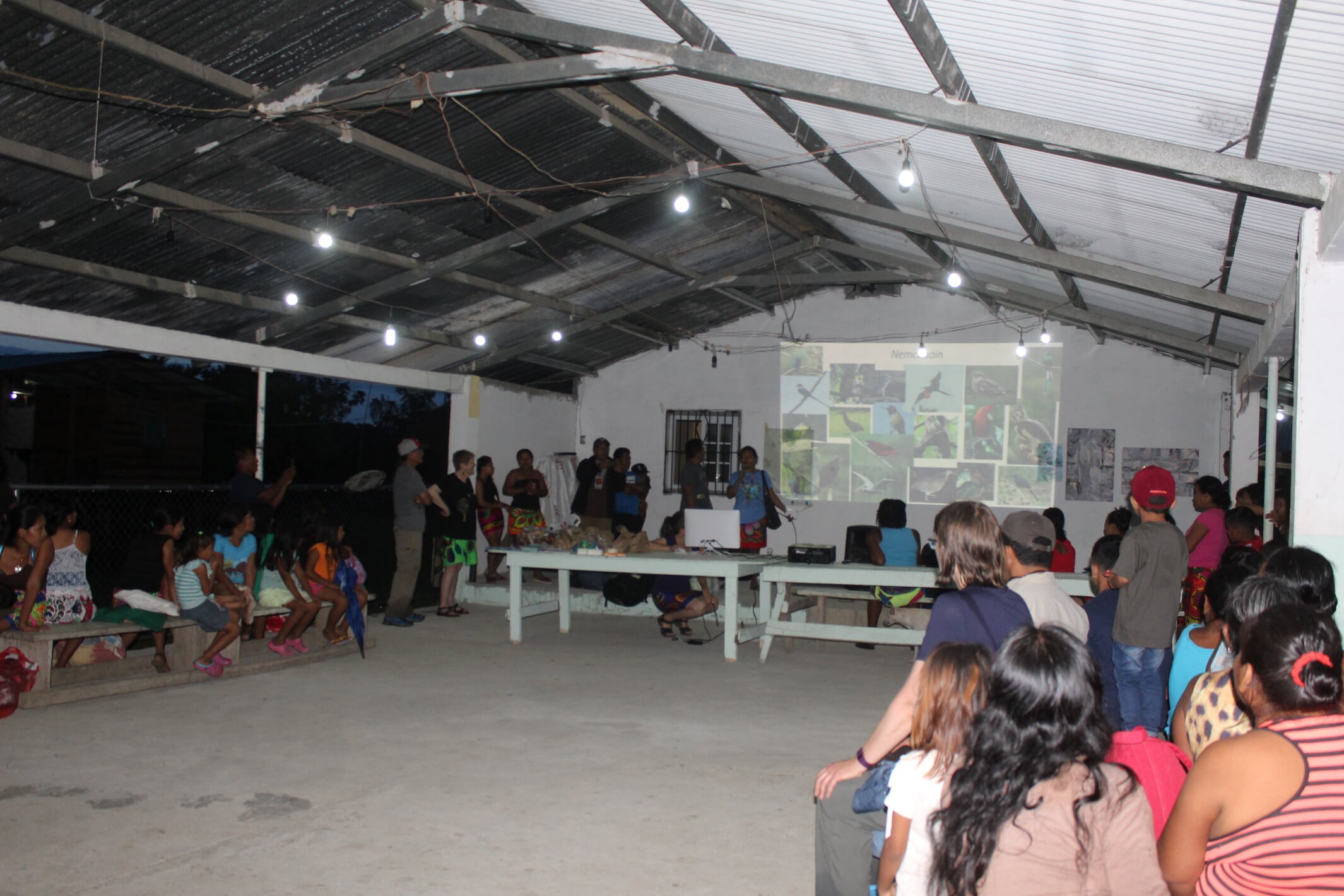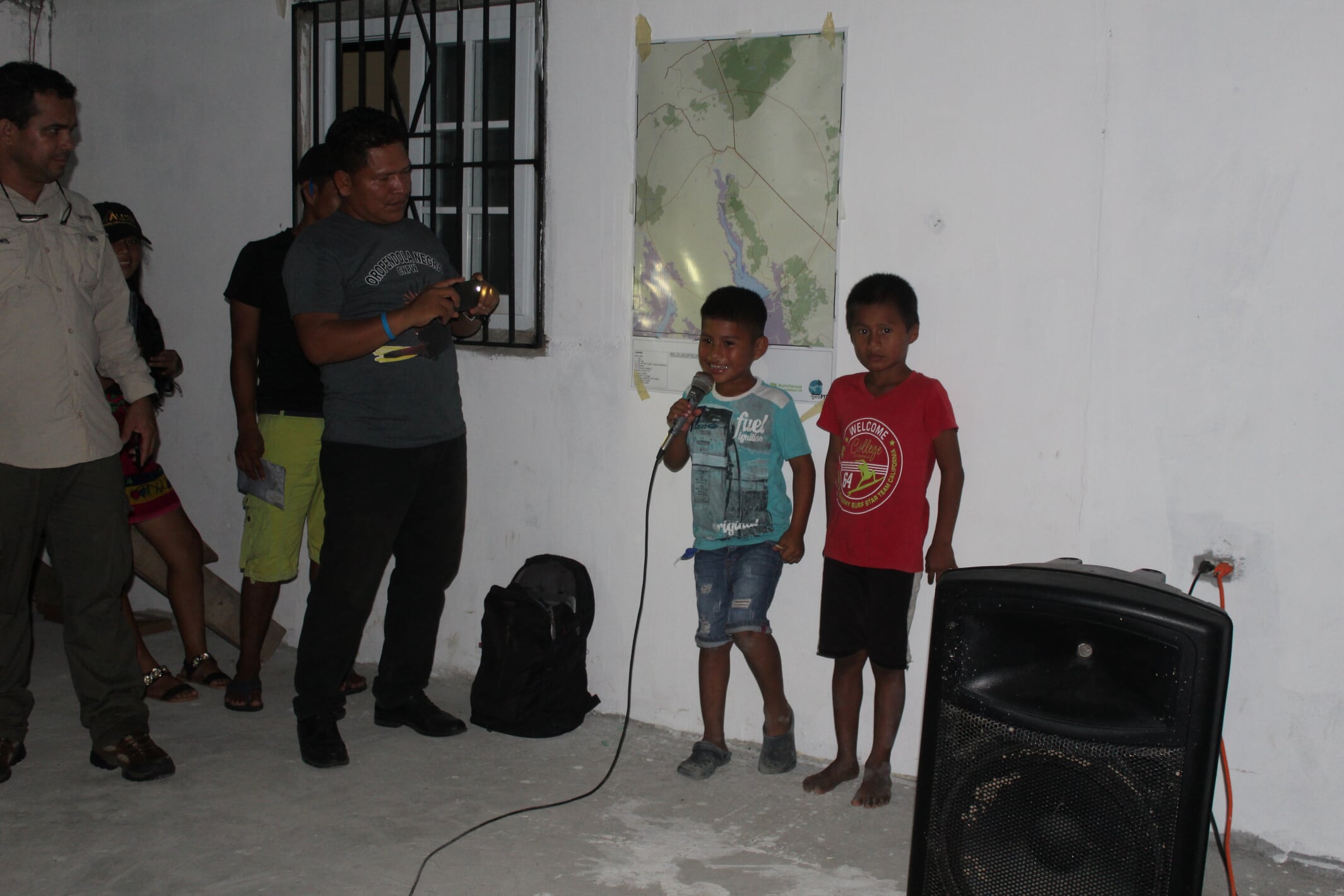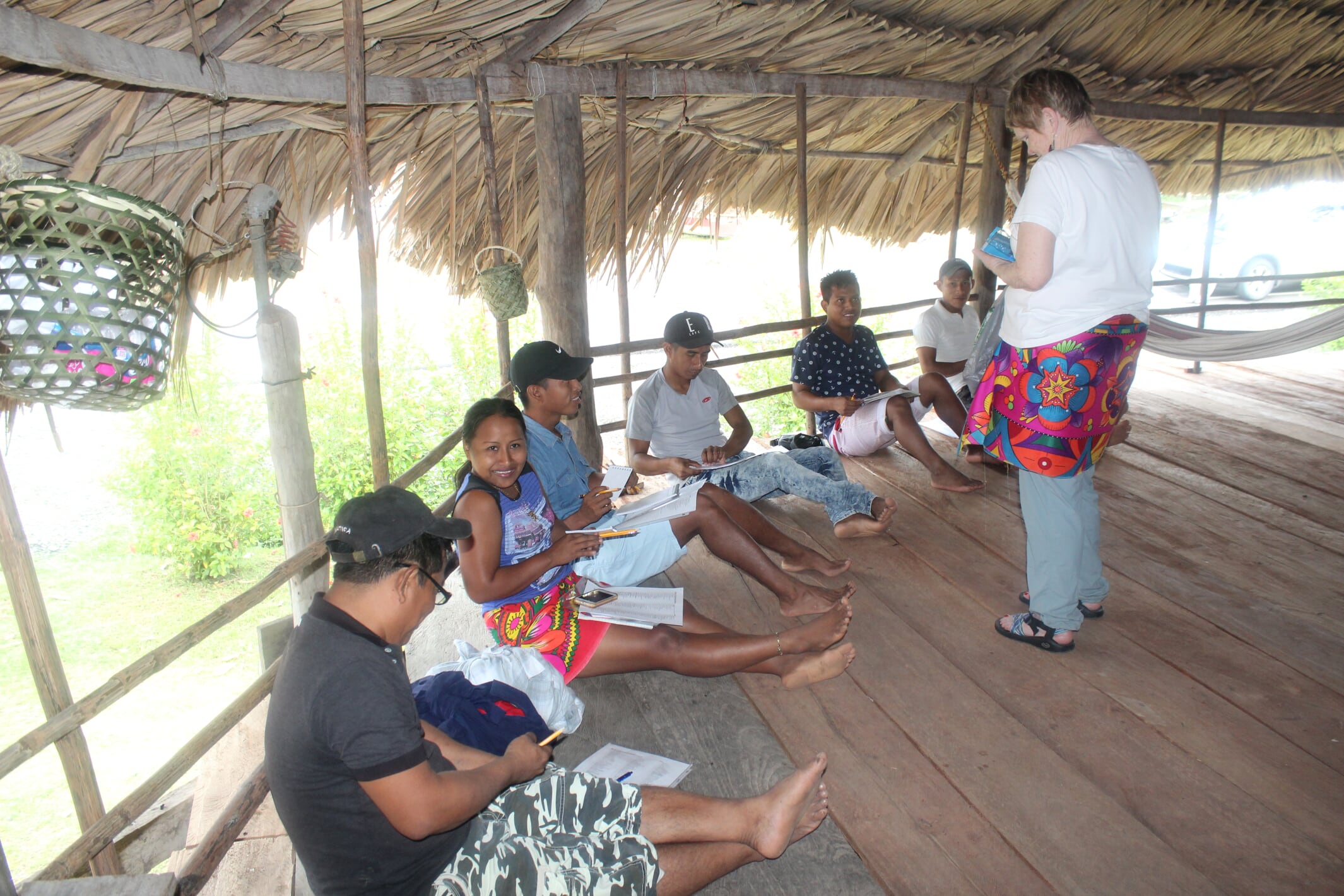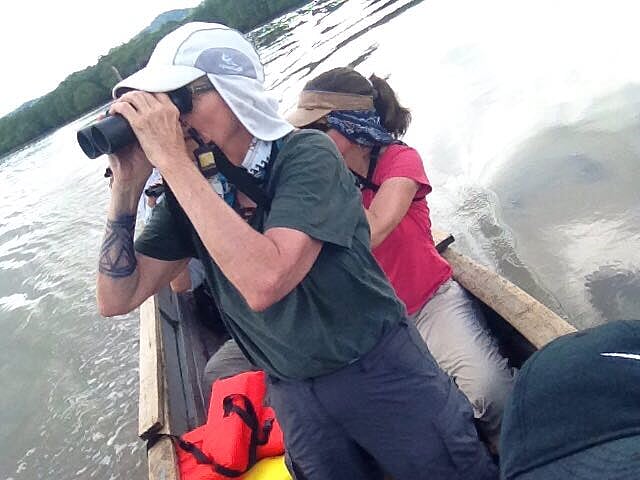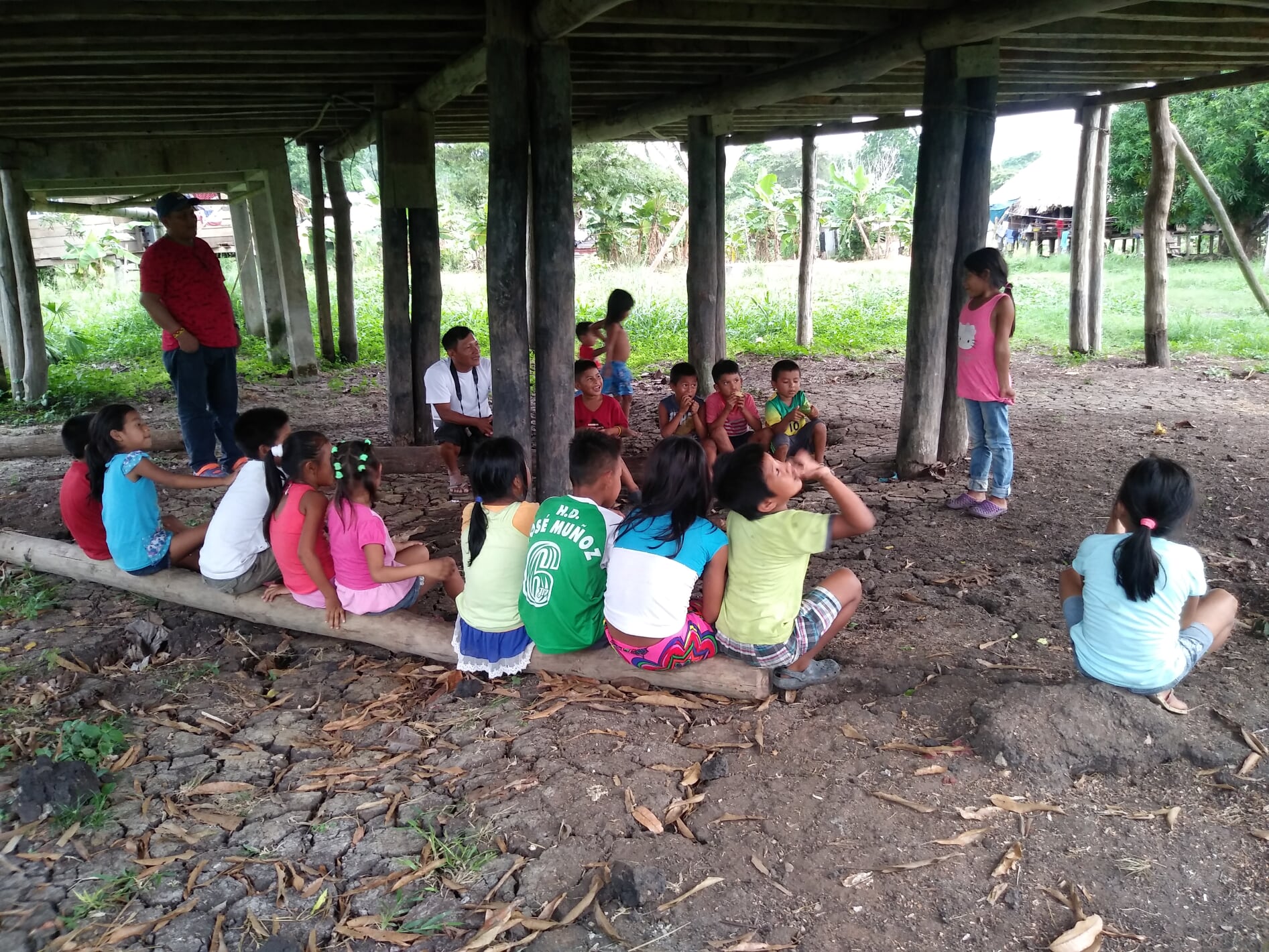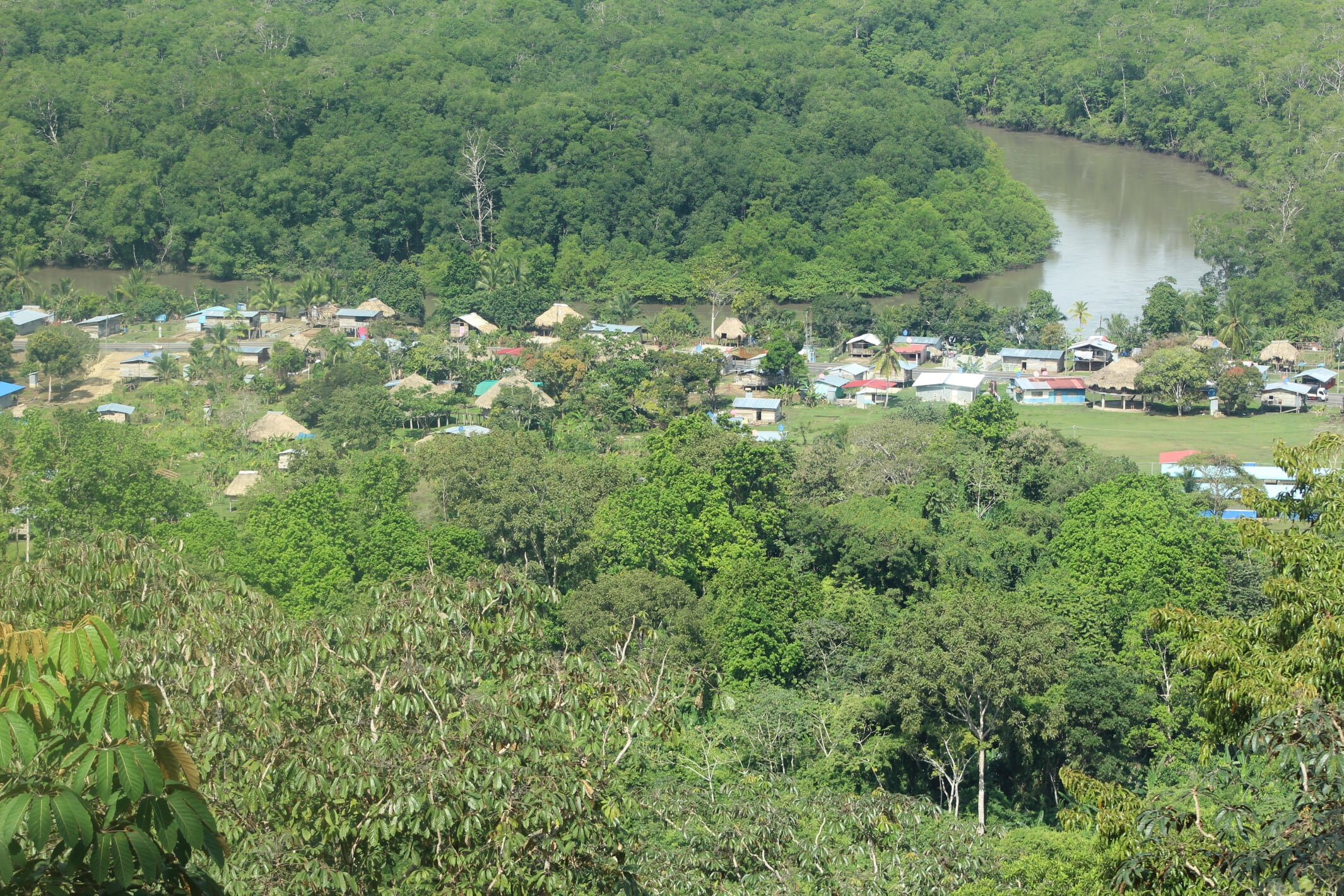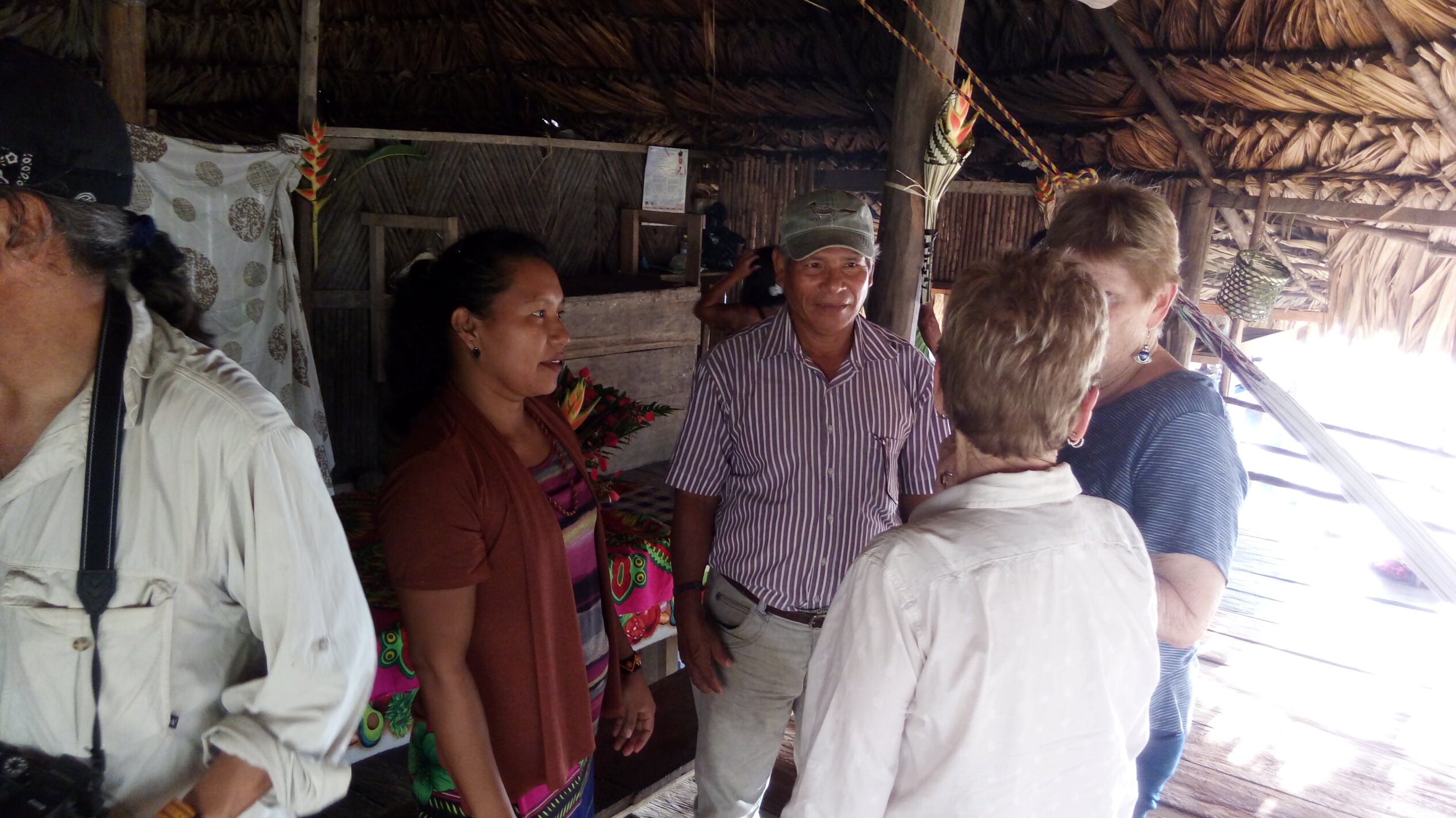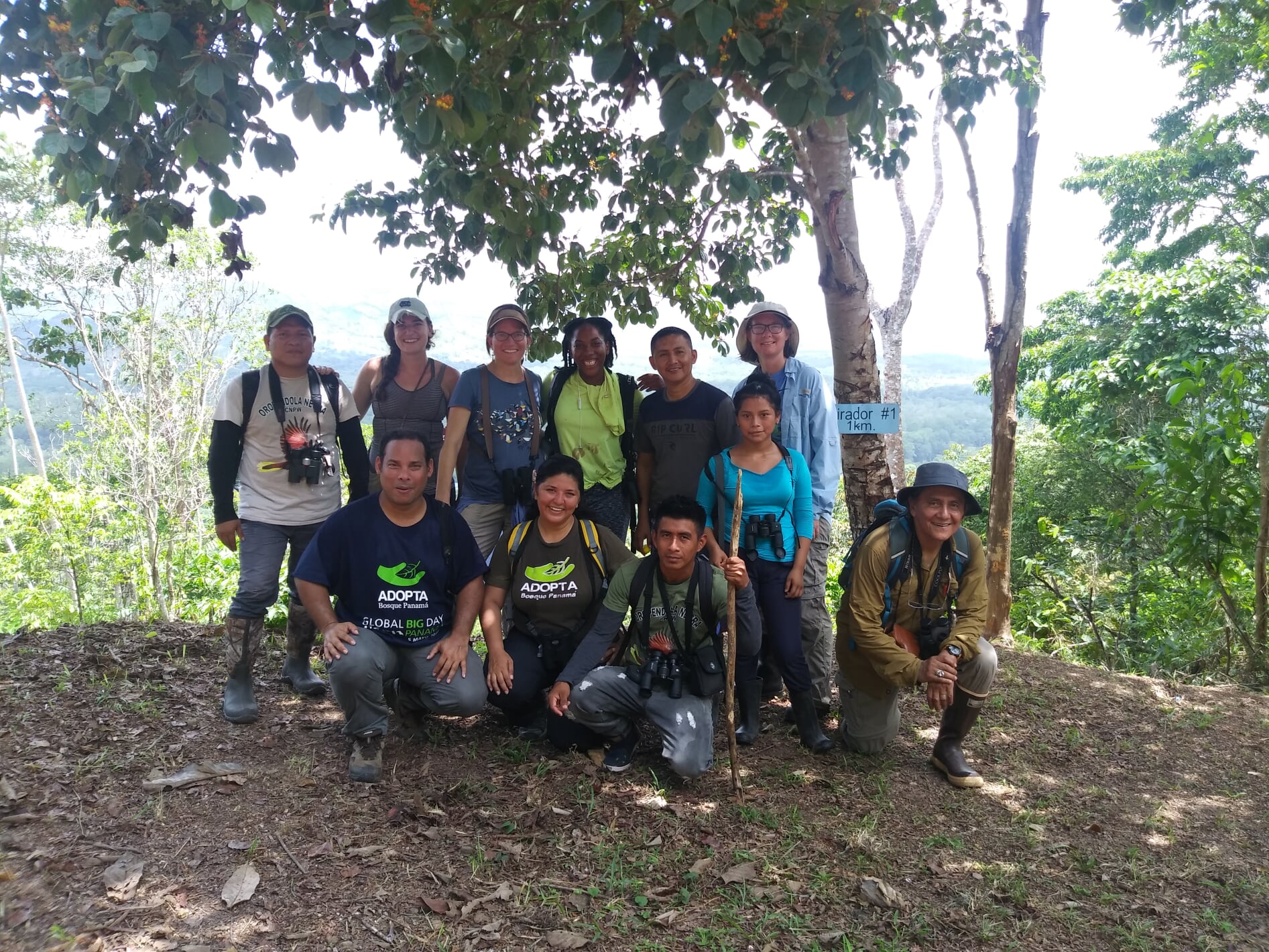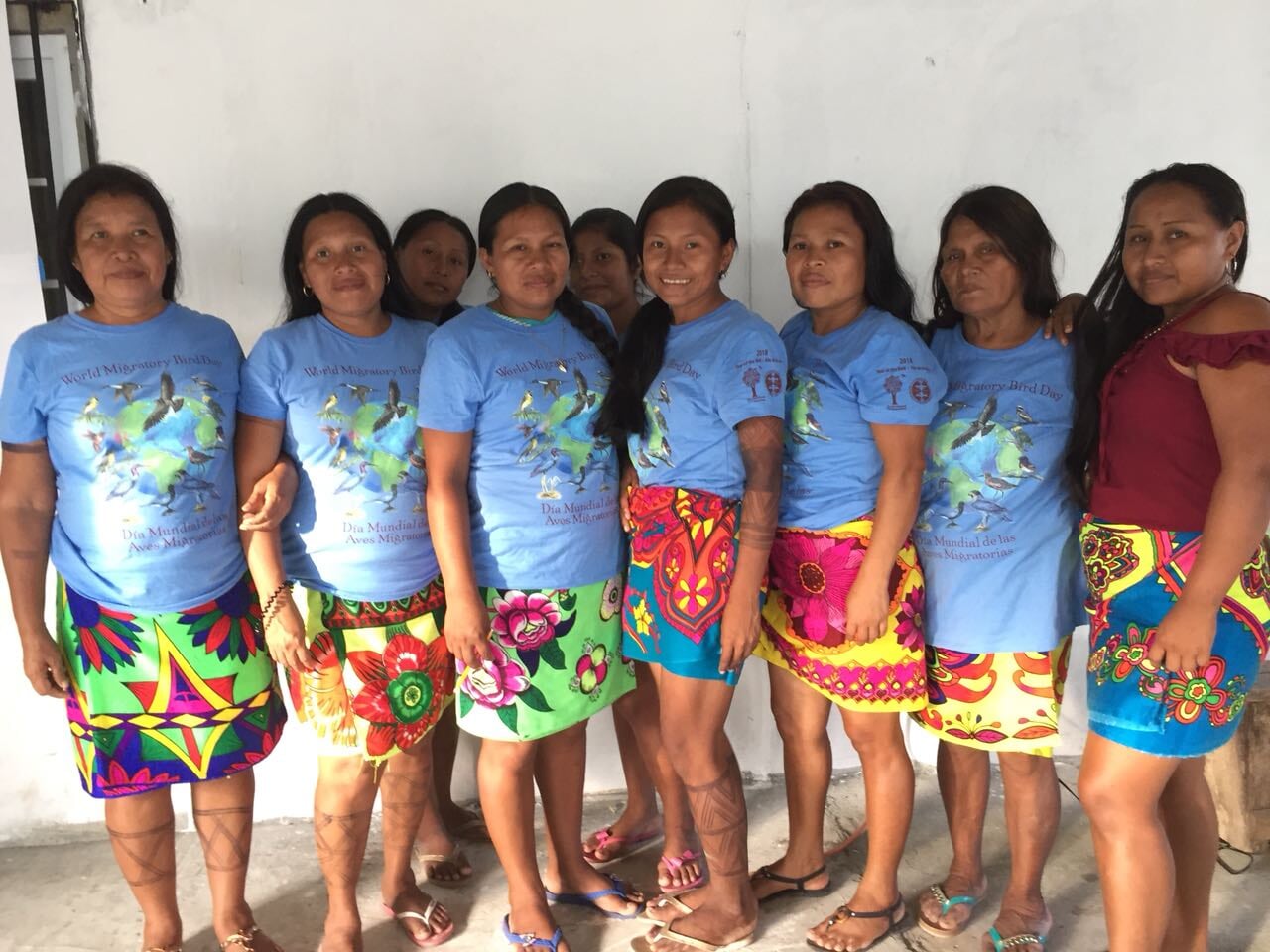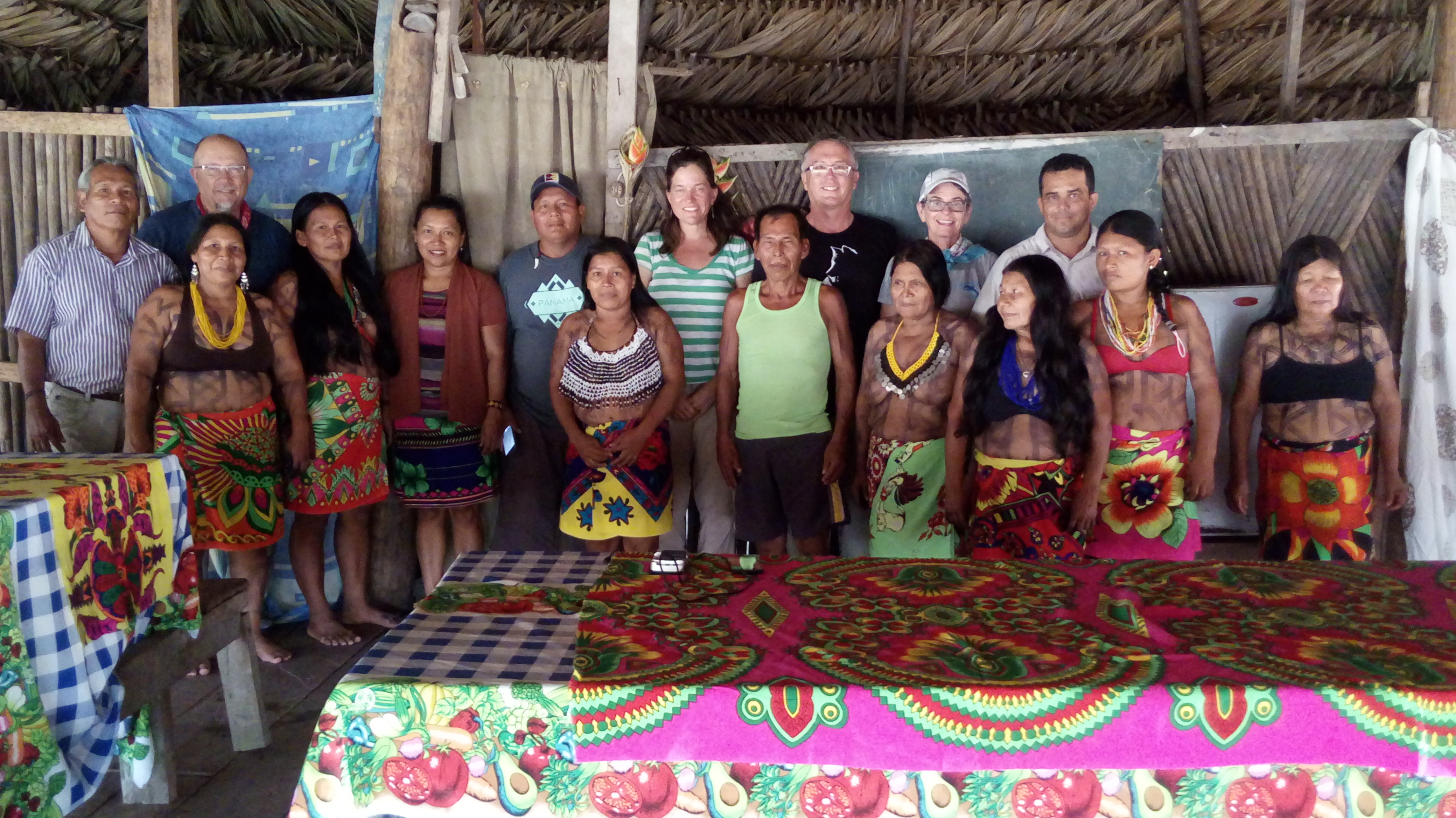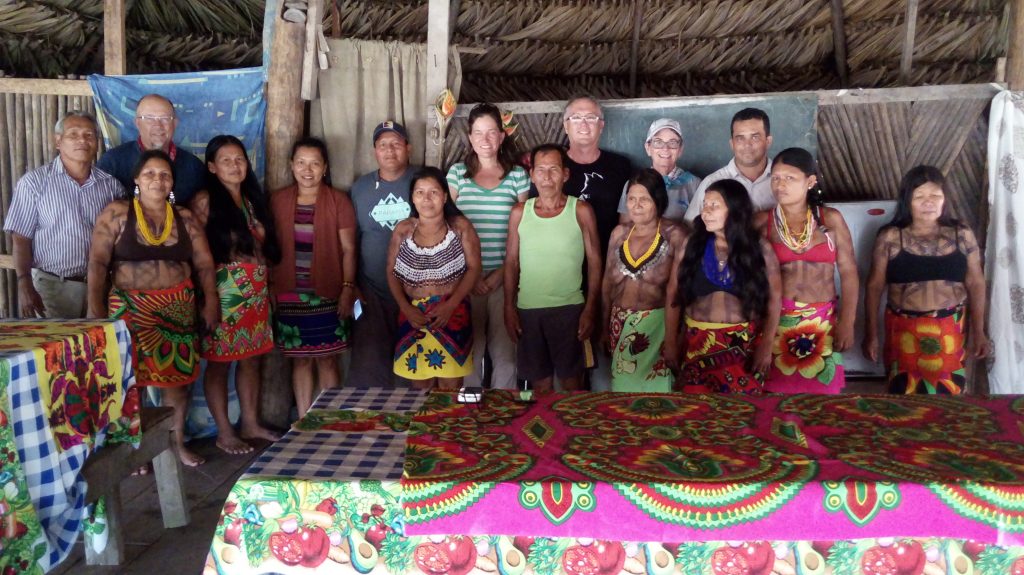 Photo ©
Dr. Anita Holtz
Photo ©
Dr. Anita Holtz
For more than a year, the leaders of the Puerto Lara indigenous community, the Wounaan Podpa Nʌm Pömaam (CNPW), and Native Future have run community gatherings to locate and identify birds in the region of Puerto Lara. Through this love for birds, the amazing Birds of Wounnaan collective was born – also known as Oropendolas Negras (Black Oropendolas)! The Oropendolas Negras have continued to learn more about their local birds. They have learned to identify them, to pronounce their common names in English and Spanish, and share their observations on eBird. It was essential to include their expertise about the Wounaan culture in the educational materials so that they could identify birds in their native language (wounaan meu). Local birds have a special meaning in the Wounaan culture. The activities led participants to share their knowledge and pride about their local birds.
The binoculars from Optics for the Tropics helped participants observe their local birds more clearly. It was because of this support that they were able to jot down more birds on their walks than ever before! After bird observations were complete, everyone from the community celebrated the beautiful birds around them! They were able to share their excitement about bird learning and bird conservation through art, dance, and traditional stories; in part, thanks to the support of the Cornell Lab of Ornithology. They even had bird singing contests, where the participant that sounded almost like a bird won!
The community loved the observations they were doing so much that they made a trip to another Wounaan community to share their experiences and observe birds with them. It was great to see the cultural experts in the Wounaan culture as well as important leaders during the events. They jotted down the birds they saw in their native language and brought the community together to celebrate conservation.
At the end of this series of events, there was a list of more than 200 birds observed in Puerto Lara. They recorded bird data in English, Spanish, and Wounaan Meu. The participants took home materials that illustrated the local birds and their cultural importance. The women from the group Tangaras Azules used their binoculars and observed the birds that came near their homes. They made bird feeders and participated in the events of Oropéndolas Negras!
The bird observation program Neem Chaain hoo k᾽ap᾽ʌ Wёnʌrraag- Wounaan Bird Conservation in Puerto Lara created activities with the support of the National Wounaan Congress. They were in charge of conducting two bird observations, as well as jotting down the birds they observed. The activities also helped foster a discussion about the importance of conserving local green areas for the local economy as well as the environment. These activities would not have been available without the financial support of Native Future, Dr. Julie Velasquez Runk from University of Georgia, the US Forest Service International program, the Programa de Pequeñas Donaciones de GEF (Global Environmental Finance) de PNUD (Programa De Las Naciones Unidas Para El Desarrollo) (United Nations Development Programme), and from Environment for the Americas.
To learn more about the wonderful activities are done by the Wounaan community and to witness the passion of the Wounaan town and their leaders to improve their community and conserve their natural lands, explore the following sections!
World Migratory Bird Day, May 12, 2018
On May 12, 2018, two groups set out to observe the birds in the Puerto Lara region. One went out to the lookout and the other went to observe the principal highway of Puerto Lara, towards the Pan-American highway. Members from Wounaan Podpa Nam Pömaam (Wounaan National Congress), the Foundation for the Development of the Wounaan People (Fundación para el Desarrollo del Pueblo Wounaan), and the Wounaan community in Puerto Lara, Panama spent hours walking five miles observing and counting at least 492 birds – 92 different species – with Wounaan Oropendola Negra colleagues and six more Panamanians. The new birds for the Puerto Lara list are Gavilán Colirrojo (Buteo jamaicensis), Caracara Avispera (Ibycter americanus), y Búho Penachudo (Lophostrix cristata). In the afternoon, members of the Wounaan community gathered to sing, dance, and celebrate World Migratory Bird Day! They also celebrated their culture and the beautiful natural world they call home.
The Foundation for the Development of the Wounaan People, the winner of one of the mini-grants for Latin America of Cornell Lab of Ornithology, celebrated their birds through educational activities. The celebration started with “Why do birds migrate?” presentation about the birds in Puerto Lara and their names in Wounaan meu – the Wounaan native language. There were also workshops on how to identify local birds and improve their habitats. Next was a coloring competition challenging budding Wounaan artists to draw their favorite birds. The night was filled with the sound of hooting and tweeting youngsters imitating Mottled Owls (Ciccaba virgata), Red-crowned Woodpeckers (Melanerpes rubricapillus) and Pale-vented Pigeons (Patagioenas cayennensis), and the clapping and laughter of the community cheering them on.
The celebration wrapped up with a Wounaan dance competition based on the flight movements of the Vulture (Coragyps atratus). Everyone also tried their best to sound like a Howler Monkey, a species of monkey that is known in the community for the sounds it makes. Everyone joined the laughter, singing and dancing to celebrate World Migratory Bird Day.
The overall objective was to show the world the conservation practices that the Wounaan have practiced for generations. The Wounaan Bird Count embodies forest conservation, sustainable development and cultural survival objectives the Wounaan are striving to achieve. Each count helps put Puerto Lara and the Wounaan of Panama on the map, literally and figuratively. In the words of the Secretary of the Wounaan National Congress, Meybi Chamarra;
“Before they said we didn’t exist; now they know we do.”
Everyone was a winner that evening thanks to super-volunteers Robert Mesta and Janice Jorgensen who coordinated the count, celebration events and prizes. Also, a special thank you to Dr. Anita Holtz for photo-documenting the fun (many of these are her photos.) Finally, thank you to Cornell Lab of Ornithology and Environment for the Americas for supporting this fun-filled day.
The first bird count in Puerto Lara, Darién, Panama; January 5, 2018
The first bird count in the Wounaan community started in Puerto Lara, Darién, Panama with many participants joining in. It was a total success! There were 20 new bird species found in the bird observation trip! The participants were from the Oropéndolas Negras in Puerto Lara, Meteti, Panama City, Boquete, and the United States. The birds that were commonly seen in the activity were: Golden-collared Manakin (Manacus vitellinus), Black-crowned Night-Heron (Nycticorax nycticorax) , Boat-billed Heron (Cochlearius cochlearius), straight-billed woodcreeper (Dendroplex picus), Black and White Owl (ciccaba nigrolineata), Hoffmann’s two-toed sloth (Choloepus Hoffmanni) and two porcupines.
One bird observing group headed toward Santa Fe, the second group went towards the
hills, while the third group went towards the Sabanas river. The whole excursion lasted 22 hours! The Sabanas River explored and found the Bat Falcon (Falco rufigularis), many Little Blue Herons (Egretta caerulea), and a coatimundi looking for rabbits to eat.
Everyone enjoyed the observations! In the evening the Oropendolas Negras presented information about the trips, and the cultural experts presented the importance of the birds observed in the Wounaan culture, including a wonderful traditional story about the Potoo (Nyctibius grandis) bird. Mrs. Cheucarama stated that she saw Amazilia Colirrufa (Amazilia tzacatl) in her new birdfeeder! Participants in the community had the chance to discuss the activity, ask questions, and express their support to keep their community Green and conserve their local birds. The celebration lasted the whole night with traditional dances. It was a night to remember!
